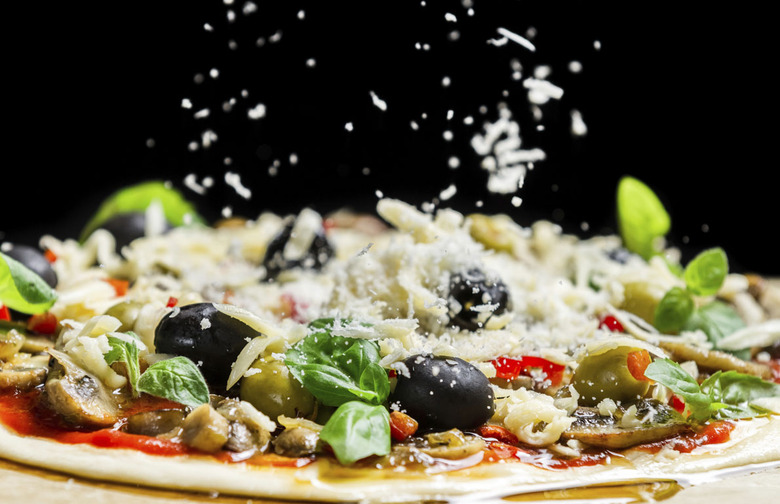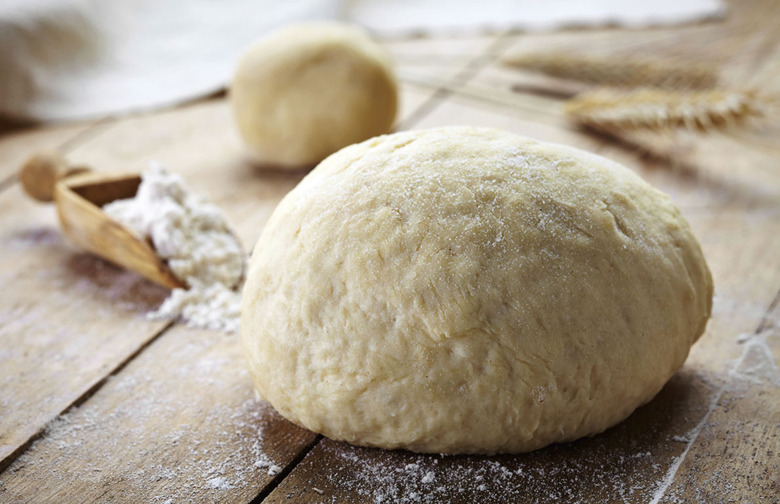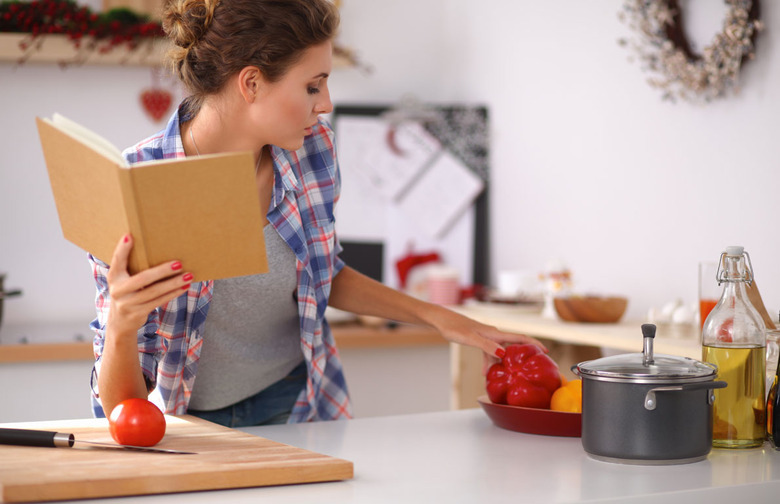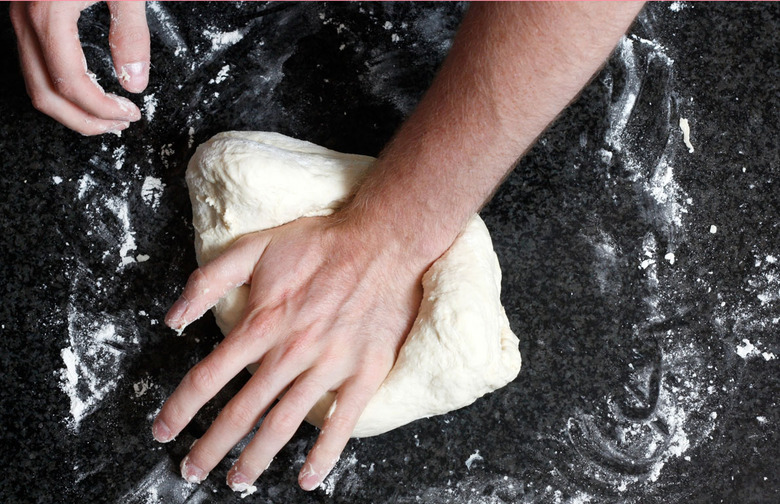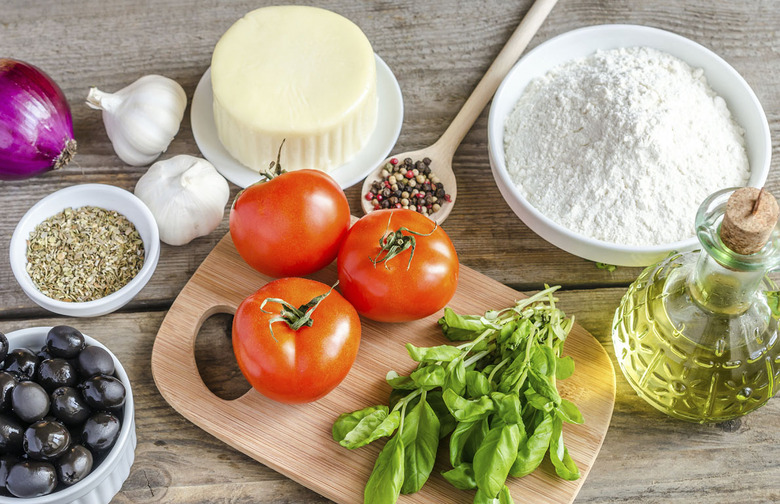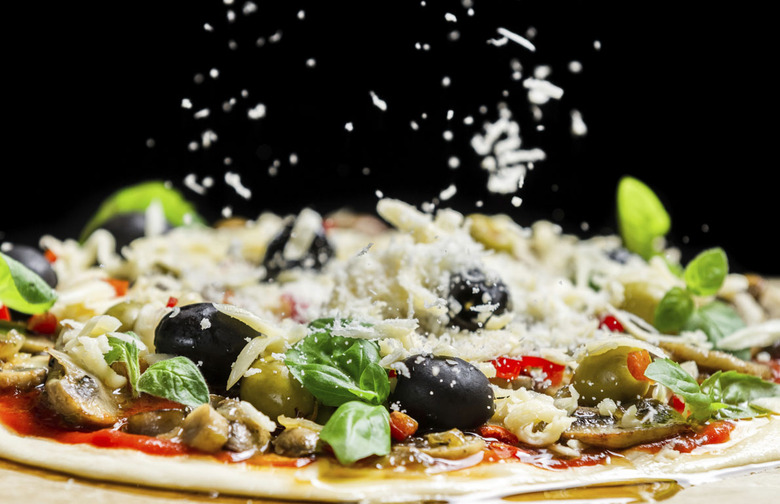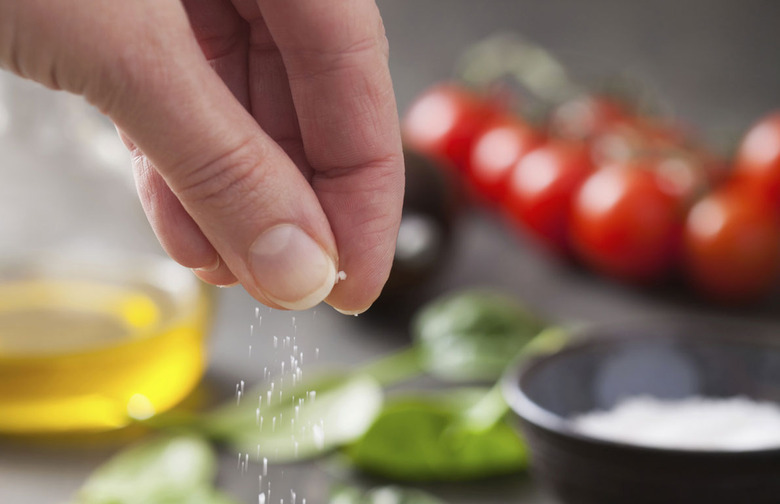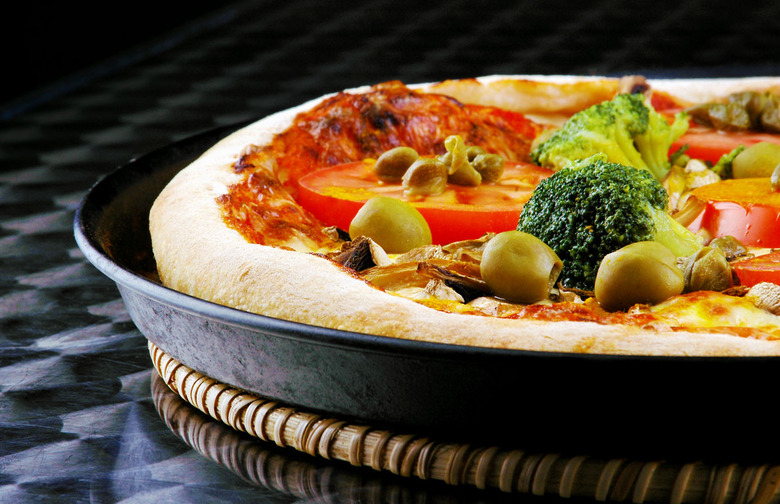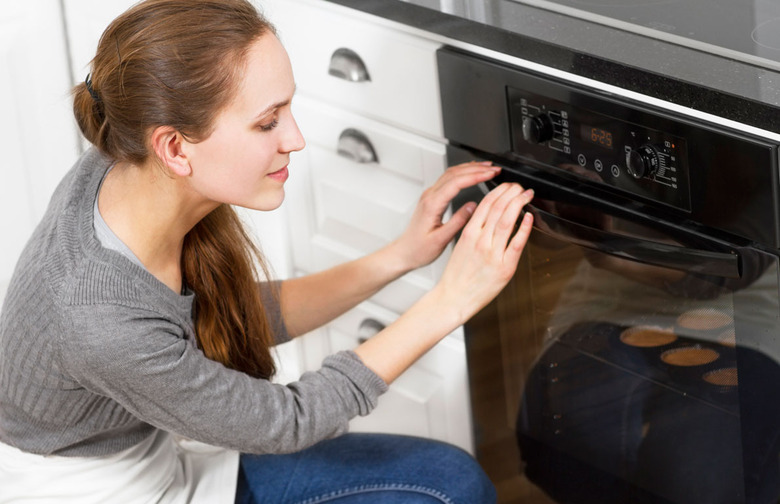How To Make Perfect Pizza At Home
We may receive a commission on purchases made from links.
Make the perfect pizza at home with these expert tips.
Find a Dough You Like
According to Craig Whitson, author of Passion for Pizza, one of the keys to great pizza is finding a dough recipe that works for you. As he says, "many doughs can be rolled out for a thin crust or pressed for a puffier, thicker crust. Mastering the dough is key to the world of pizza". If you need a great, all-purpose pizza dough, try the recipe "Our Favorite Dough" from his book. "This dough can be made using pretty much any type of flour and a simple starter. What is good about this dough is that it requires little work, it is flexible, and it tastes great. The only disadvantage is that it has a long rise, but the slow rise gives this dough such great flavor."
Plan Ahead
That being said, homemade pizza requires a bit of planning, regardless of the dough you choose. Craig says that making dough a day ahead and giving yourself time to shop for high-quality ingredients are both essential for a great pizza.
Know How to Handle Pizza Dough
Stretching pizza dough can be tricky — it's important to stretch it slowly so that the dough doesn't tear. Start by gently flattening the ball of dough (press it down in all directions with your fingers) on a lightly floured work surface. Then, gently stretch the dough. In his book, Passion for Pizza, Craig Whitson recommends laying a cupped hand along one side of the dough and then using your other hand to pick up the opposite edge of the dough and gently "slap" it over the back of your cupped hand. Continue doing this all around the disc of dough until it is stretched to the desired size and thinness.
Use Quality Toppings
"Great pizza is made up of simple ingredients," says Whitson, so make sure those ingredients are high quality. You don't have to spend a ton of money, but, from the flour in the crust to the cheese that goes on top, make sure you buy the best quality ingredients possible for your budget.
Know How to Top Your Pizza
"One thing I have seen time and time again is overdressed pizzas," says Whitson. "It is critical to create a balance between the crust, sauce, cheese, and toppings. Some people may love a pizza with triple cheese, but overloading any ingredient can mask the flavors of the other ingredients. This balance is essential. And the order of the placement of toppings can drastically change the pizza. There are pizzas where the sauce should definitely be on top, though generally speaking, sauce will go on first. Are the onions chopped, minced, sliced in thin rings, sautéed, or raw? The treatment and placement of ingredients is muy importante!"
Do You Need Salt?
Some pies need a sprinkle of salt at the end before they can achieve true pizza perfection. If you're using salty ingredients like olives or anchovies, you can probably skip the extra salt, but many pizzas will benefit from a pinch of salt added after they come out of the oven.
Cook Your Pie on a Pizza Steel or Stone
Whitson also advises home cooks to "invest in a baking stone or baking steel; this will drastically improve the pizza's crust." About an hour before you plan to cook your pizza, put the stone directly on the floor of your oven (remove any racks from the oven first) and allow it to get good and hot before placing the dough on it to cook.
Cook Your Pizza at the Right Temperature
"Most — but not all — pizzas should be cooked at the oven's hottest temperature; one of the common pitfalls to making pizza at home is cooking at too low a temperature," Whitson cautions. Some pizzas cook at temperatures as high as 900 degrees F, which you won't be able to achieve in your kitchen, but your pizza will still benefit from being cooked at very high heat.
Have Fun
"Making good pizza at home is nothing to worry about or fuss over. Enjoy the process," Whitson says. "Enjoy the pizza. We generally make pizza at home for family and/or friends. Good company and good pizza are a match made in heaven."
